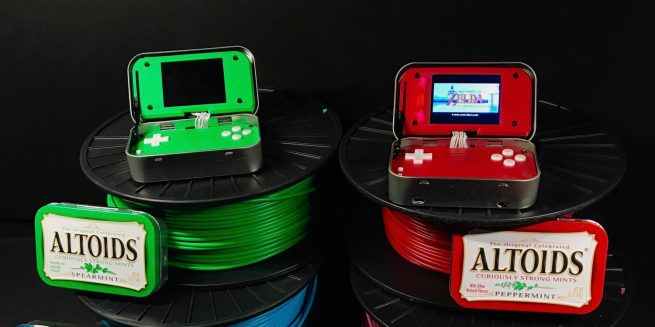
It’s been impossible to ignore the success of the Nintendo Switch and NES Classic over the past few months. Unfortunately, the chances of adding either device to your collection are slim to none. While the Switch is facing unprecedented demand, Nintendo announced on Friday that it would be discontinuing the beloved NES Classic. If you’re aching to relive your childhood and play some retro games, but don’t want to shell out two or tree times the price to pick one of the consoles up, a Raspberry Pi might be exactly what you’re looking for.
Raspberry Pi are inexpensive, pocket-sized single board computers that are available in various models, offering different sizes and performance. We’ve covered different add-ons to enhance the devices, as well as custom-made cases to add a little bit of style to the computer.
To get started building your custom console, you’ll need a Raspberry Pi, MicroSD card, gaming controller, micro USB cable + power supply and an HDMI cable to display it on a TV or monitor. While there are various models available, we recommend the latest and most powerful Raspberry PI 3, which also sports built-in Wi-Fi and Bluetooth.
In terms of gaming, Retropie is the heart of the console. Like similar emulators, the operating system allows you to enjoy games from over 50 different consoles, which means you can play NES games on the same device as Gameboy Advanced titles. You can go about installing RetroPie onto a MicroSD yourself, or take the more simple route and use one of the pre-made images with a program like ApplePi-bake to burn the files onto the card in order to get everything setup.
To configure the console, insert the MicroSD card into the Raspberry Pi, connect all of the peripheral cables and plug the device into a power supply. A series of onscreen prompts will allow you to set up the device and to configure your desired controller.
One of the great things about using a Raspberry Pi as the base is that you can use practically any controller you’d like. Because the Raspberry Pi 3 sports USB-A ports and Bluetooth, you aren’t limited to a specific controller. So you can stick with the classic NES design, use a PS4 or Xbox One controller, or even the new Switch JoyCons.
For the games themselves, you’ll have to supply the ROMs yourself. These can be ripped from the cartridges, or found elsewhere online. As a reminder, downloading these ROMS without owning an original copy is illegal and should be done at your own risk. You can transfer the game files over Wi-Fi from a computer or by using a flash drive.
While creating a custom console does require a bit of work to get running, the sense of nostalgia you’ll get from playing your favorite childhood game will definitely be worth it. There are a variety of walkthroughs and tutorials available as well that provide step-by-step instructions for customizing your console with a retro-themed case. RetroPie also offers a wealth of documentation in order to get your console up and running.
Built on the latest Broadcom 2837 ARMv8 64 bit processor the Raspberry Pi 3 Model B is faster and more powerful than its predecessors. It has improved power management to support more powerful external USB devices and now comes with built-in wireless and Bluetooth connectivity. To take full advantage of the improved power management on the Raspberry Pi 3 and provide support for even more powerful devices on the USB ports, a 2.5A adapter is required. Technical Specifications: – Broadcom BCM2837 64bit ARMv8 QUAD Core 64bit Processor powered Single Board Computer running at 1.2GHz – 1GB RAM – BCM43143 WiFi on board – Bluetooth Low Energy (BLE) on board – 40pin extended GPIO – 4 x USB2 ports – 4 pole Stereo output and Composite video port – Full size HDMI – CSI camera port for connecting the Raspberry Pi camera – DSI display port for connecting the Raspberry Pi touch screen display – MicroSD port for loading your operating system and storing data – Upgraded switched Micro USB power source (now supports up to 2.5 Amps) This product is made under license in both China and the U.K. Please see the product packaging.
Image Source: SudoMod
FTC: Electronicsforward is reader supported, we may earn income on affiliate links
Subscribe to the Electronicsforward YouTube Channel for all of the latest videos, reviews, and more!